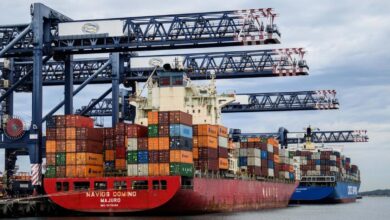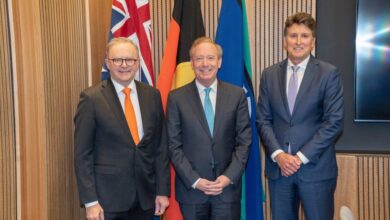An Economic and Environmental Game-Changer

In the midst of economic tumult and environmental crises, two of Australia’s leading economists, Ross Garnaut and Rod Sims, have tabled a bold proposal that could not only steer the nation towards a sustainable future but also potentially unlock an economic renaissance. They advocate for the imposition of a carbon solutions levy on the production and importation of fossil fuels within Australia. This levy, they argue, could generate over A$100 billion in revenue in its initial year, catapulting Australia to the vanguard of the global low carbon revolution. The proposed utilization of these funds is comprehensive: accelerating the expansion of renewable energy, bolstering low carbon manufacturing, and easing the cost of living for consumers.
The Economic Imperative for a Low Carbon Transition
The rationale behind Garnaut and Sims’s proposal is not merely environmental; it is staunchly economic. With the global community committed to achieving net zero emissions by 2050, the economists underscore the inevitability of a transition to a zero carbon economy. This shift, they argue, is not just about mitigating climate change but about seizing economic opportunities. The transition promises significant productivity gains and positions Australia to capitalize on the burgeoning demand for low carbon technologies and products. However, the implementation of carbon pricing policies is deemed critical for reducing greenhouse gas emissions efficiently and fostering an economic environment conducive to innovation and sustainability.
Challenges on the Home Front
Despite the clear economic and environmental rationale, the proposal has ignited a firestorm of political resistance and skepticism from various quarters in Australia. The nation, grappling with a slowing economy marked by job market stagnation, rising unemployment, and a downturn in sectors like construction and retail, finds itself at a crossroads. Critics argue that the levy could exacerbate the economic slowdown, while proponents see it as a vital step towards economic rejuvenation. Moreover, the Australian economy faces challenges from rising interest rates, which, contrary to expectations, have not dampened house prices significantly. This situation is further complicated by Australia’s mass immigration policy, which former NSW Premier Dominic Perrottet has criticized as ‘lazy economics’ and likened to a ‘ponzi scheme’, leading to a population trap and plummeting productivity.
The Broader Economic Landscape
The latest cost of living survey from the Australian Bureau of Statistics paints a grim picture, with employee households struggling under the weight of rising rents, mortgage payments, and income taxes. In contrast, self-funded retirees appear to be weathering the storm more adeptly. The fragility and escalating costs of East Coast Australia’s energy system, exacerbated by an artificial shortage of firming power (gas), further complicate the economic landscape. Meanwhile, the NSW Productivity Commission’s controversial suggestion to alleviate high housing costs by upzoning Sydney into high-rise apartments has sparked debate. Critics argue that the Commission’s failure to acknowledge the impact of immigration on housing demand and infrastructure strain undermines its recommendations.
As Australia navigates these turbulent economic and environmental waters, the proposal by Garnaut and Sims emerges as a beacon of potential transformation. It represents a confluence of economic rationality and environmental stewardship, advocating for a future where Australia not only meets its global commitments to emissions reduction but also reaps the economic benefits of leading the low carbon revolution. The path forward is fraught with challenges, but the promise of a sustainable and prosperous economy may well be worth the political and social hurdles that lie ahead. The global and Australian economies stand at a pivotal juncture, with the potential implications of the war in the Middle East looming as a dark cloud. As the nation deliberates on the carbon solutions levy, the choices made today will indubitably shape the Australia of tomorrow.





